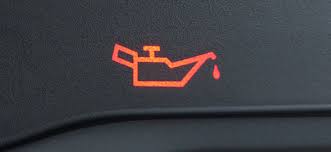A faulty oil pressure sensor can lead to inaccurate readings or failure to provide any readings at all, which can affect the overall performance and health of your engine. Here are some common signs that may indicate a faulty oil pressure sensor:
- Warning Light: The most obvious sign is the illumination of the oil pressure warning light on your vehicle’s dashboard. This light typically resembles an oil can or the word “OIL” and will illuminate in red or amber. If the sensor is malfunctioning or detecting low oil pressure, it will trigger the warning light. However, it’s important to note that the warning light can also indicate other issues, such as low oil level or a problem with the oil pump, so further diagnosis is necessary.
- Inaccurate Readings: If you have access to an oil pressure gauge on your dashboard, you may notice erratic or inconsistent readings. The gauge may display unusually high or low oil pressure levels, or the needle may fluctuate rapidly while driving. In some cases, the gauge may not provide any reading at all.
- Engine Performance Issues: A faulty oil pressure sensor can cause engine performance problems. If the sensor is sending incorrect readings, it may lead to improper oil flow or inadequate lubrication, which can result in engine issues. You may experience reduced engine power, rough idling, or even engine stalling.
- Engine Overheating: Inadequate oil pressure can contribute to engine overheating. Insufficient lubrication can lead to increased friction and heat generation within the engine components. If you notice your engine temperature rising rapidly or frequently, it could be a sign of a faulty oil pressure sensor or another related problem.
- Oil Leaks: While not directly related to the oil pressure sensor itself, a faulty sensor can cause oil leaks. The sensor may become damaged or develop cracks, leading to oil seepage or leakage. If you notice oil stains or puddles under your vehicle, it’s important to investigate the source and address it promptly.
If you suspect a faulty oil pressure sensor based on these signs, it is recommended to have your vehicle inspected by a qualified mechanic. They can diagnose the issue accurately using specialized tools and determine whether the sensor needs replacement or if there are other underlying problems with the oil pressure system. Prompt attention to oil pressure sensor issues is crucial to ensure proper engine lubrication and prevent potential engine damage.
SHARE
